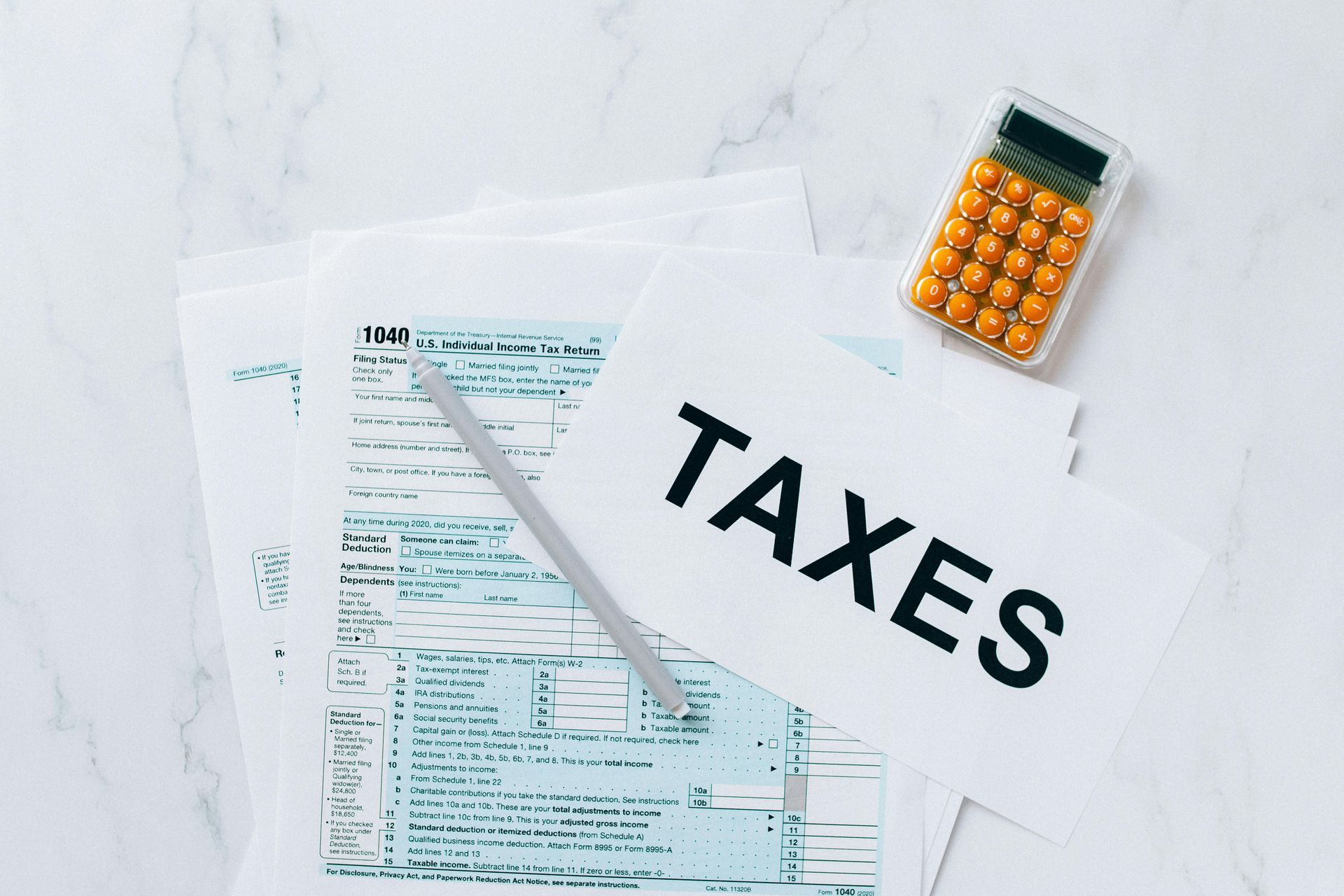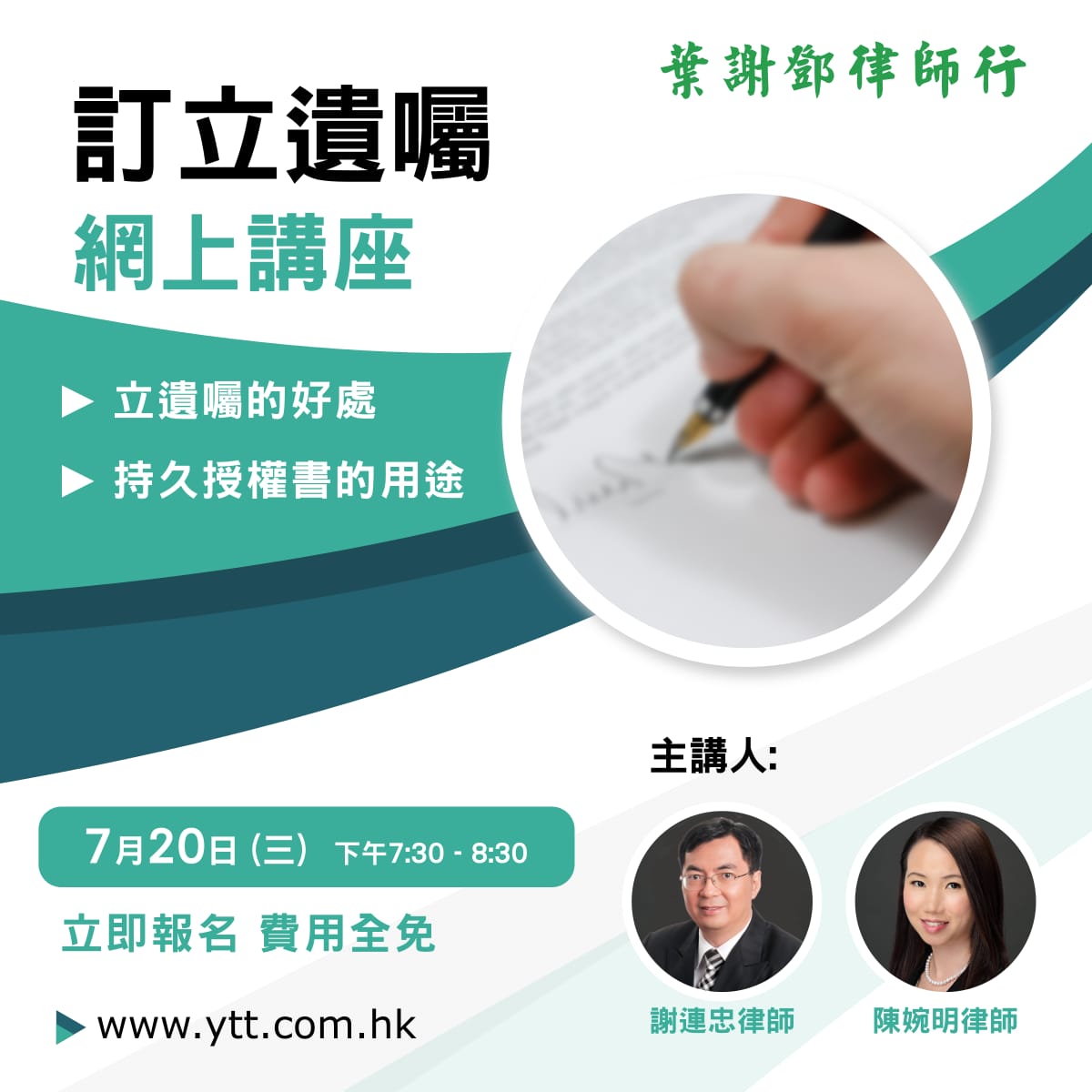Enduring Power of Attorney : Step-by-step execution guide (for donor, lawyer, doctor, attorney)
September 7, 2025
EPOA covers property/financial matters only (not medical/welfare). If that’s your aim, proceed.

Phase 0 — Decide & Set Up
- Confirm suitability
EPOA covers property/financial matters only (not medical/welfare). If that’s your aim, proceed. - Choose attorney(s)
Pick trusted adult(s) with strong financial hygiene. Consider one primary plus a replacement. - Decide structure
- Form 1 = single attorney.
- Form 2 = two or more attorneys; choose how they act: jointly or jointly and severally (and whether a substitute steps in).
- Define any limits
You may include reasonable restrictions (e.g., “no sale of home without X’s written consent”). Keep wording simple—do not alter the statutory text outside the permitted blanks. - Pick languages & copies
English, Chinese, or bilingual. Plan 2–3 originals (one for safe custody, one for registration if needed, one for attorney).
Phase 1 — Prepare the Prescribed Form
- Use the correct prescribed form (Cap. 501A)
Fill in donor and attorney details (full name, HKID, address). Do not re-draft or re-order statutory words. - Attach scheduling page (if needed)
If you include restrictions/conditions, use the form’s designated spaces or continuation sheet; keep cross-references clear. - Book the two professionals
- A Hong Kong solicitor (to interview the donor and give the solicitor’s certificate).
- A Hong Kong registered medical practitioner (to assess and certify capacity).
Phase 2 — Signing & Certification (the critical sequence)
- Identity & capacity check (doctor)
Donor attends with HKID. Doctor interviews, assesses capacity, then signs the doctor’s certificate on the form. - Independent explanation (solicitor)
Donor meets the solicitor without anyone exerting influence. Solicitor explains nature/effect of an EPOA, confirms voluntariness, and signs the solicitor’s certificate.
Notes
• The doctor and solicitor appointments can be same day or different days (close in time is best).
• Each professional must be satisfied independently.
• Avoid having an intended attorney in the room during the solicitor interview.
- Donor signs the EPOA
Donor signs in the presence of the doctor and the solicitor as required by the prescribed form (each provides their certificate). Initial every page if the firm’s practice requires. Do not leave blanks. No Tip-Ex. If an error occurs, re-print and re-sign. - Attorney(s) sign acceptance
Each attorney signs the acceptance portion. Arrange a competent adult witness (commonly the solicitor). If multiple attorneys, each may sign separately. - Check completion
- Donor signature complete.
- Doctor certificate complete (dated, signed, name & reg. number).
- Solicitor certificate complete (name, firm, Roll no.).
- Attorney acceptance(s) signed and witnessed.
- Page count consistent; any continuation sheets referenced correctly.
Phase 3 — After Execution (while donor is still capable)
- Safe custody
Store an original in firm vault or a fireproof safe. Keep an indexed certified true copy set. - Institution readiness
Some banks/utilities note existence of an EPOA but may not act on it unless/until registered on incapacity. Log a contact list of relevant institutions. - Revocation protocol (optional now)
If donor later wishes to revoke while capable, prepare a written revocation, notify the attorney(s) and institutions, and retrieve/destroy originals/certified copies.
Phase 4 — When the donor becomes mentally incapable
- Obtain current medical evidence
Attorney arranges a recent medical opinion confirming loss of capacity. - Apply to register the EPOA with the High Court
Attorney files the required application with the original EPOA and supporting papers (per Cap. 501/501A practice). Keep filing receipts and the registration confirmation. - Post-registration use
Once registered, attorney may act under the EPOA with institutions. Keep a decision log (dates, transactions, reasons) and maintain accounts for transparency.
Phase 5 — Ongoing governance & endpoints
- Attorney duties
Act in donor’s best interests, avoid conflicts, keep donor’s money separate, keep records, and follow any restrictions in the EPOA. - Changes / termination
- Donor’s death → EPOA ends (estate then handled by executor/administrator).
- Donor’s revocation while capable → ends upon proper notice.
- Attorney’s resignation or becoming unable → follow replacement mechanics in the EPOA.
- Court can intervene if abuse or dispute arises.
Practical Tips & Pitfalls (1-minute checklist)
- Use prescribed forms only; never re-draft statutory wording.
- Keep the doctor & solicitor certificates pristine and complete.
- Avoid influencers in the room when the donor meets the solicitor.
- Prefer clear, minimal restrictions to avoid bank refusals.
- Keep multiple certified copies ready.
- Maintain an action log & accounts once the attorney starts acting.









